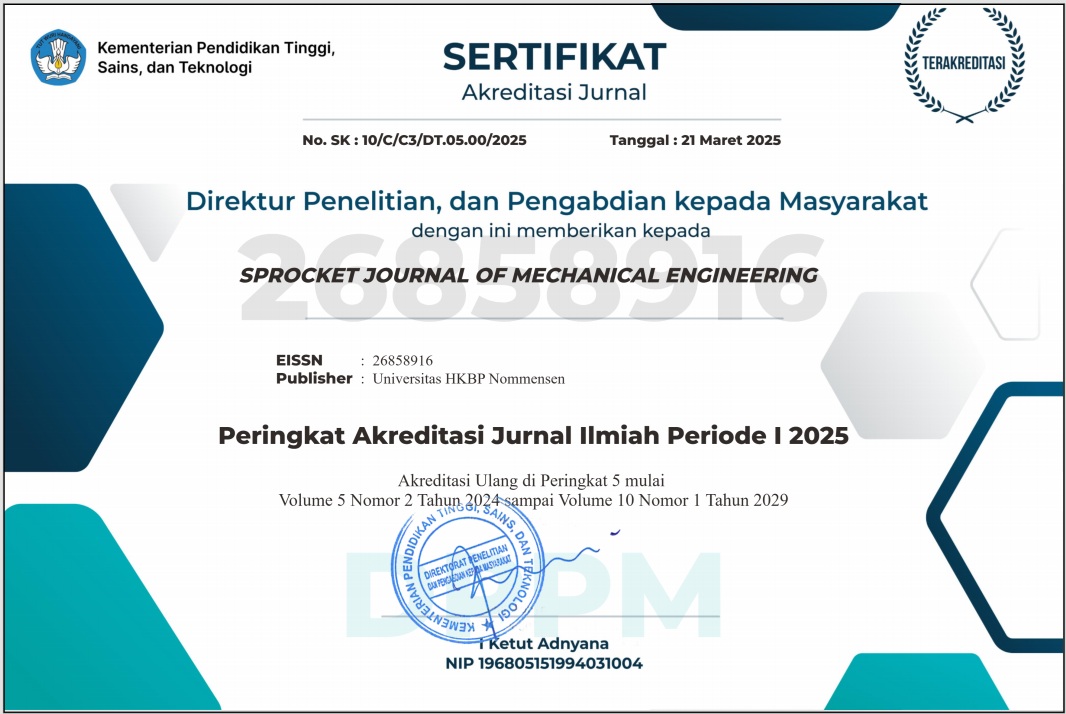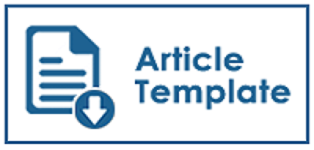Analisis FEM Dari Suhu HAZ Dengan Pemodelan Sumber Panas Pada Proses Butt-Joint Menggunakan MSC Marc Mentat
Abstract
The success of the welding process is the occurrence of good and strong welding joints that are inseparable from the influence of the heat source. The problem that often occurs when welding is a distortion that can trigger the initial formation of cracks. By predicting the level of welding distortion beforehand, engineers can also reduce the amount of rework by reverse design and distortion margins. That is why with current technological developments it is possible to carry out simulations based on analytical solutions that are implemented through the use of software, where in this study the authors sought to model the temperature of the HAZ region in the Butt Joint process using MSC Marc Mentat. The simulation results show that the heat source is very determining the occurrence of distortion and pressure on the surface. This is caused by the phenomenon of melting and shrinkage that occurs in a short time.
References
2. K. P. Prajadhiana et al., “Comparative distortion analysis of welded T-Joint between 2D-shell and 3D-solid element using FEA with experimental verification,” J. Mech. Eng., vol. 5, no. Specialissue2, pp. 99–115, 2018.
3. Charles S.P. Manurung et.al., FEM analysis of the HAZ temperature by heat source modeling on butt joint process using msc marc mentat, IOP Conf. Ser.: Mater. Sci. Eng. 725, 012009, 2020
4. D. Sebayang et al., “Numerical simulation of distortion and phase transformation in laser welding process using MSC Marc/Mentat,” IOP Conf. Ser. Mater. Sci. Eng., vol. 453, no. 1, 2018.
5. MSC Software, “Volume A: Theory and user information,” MSC.Software Corp., 2016.
Penulis yang menerbitkan dengan SPROCKET JOURNAL OF MECHANICAL ENGINEERING menyetujui ketentuan berikut :
- Penulis memegang hak cipta dan memberikan jurnal hak penerbitan pertama dengan karya yang dilisensikan secara bersamaan di bawah Lisensi Internasional Creative Commons Atribusi 4.0 . yang memungkinkan orang lain untuk berbagi karya tersebut dengan pengakuan atas kepengarangan karya dan penerbitan awal dalam jurnal ini.
- Penulis dapat membuat pengaturan kontraktual tambahan yang terpisah untuk distribusi non-eksklusif atas versi jurnal yang diterbitkan dari suatu karya (misalnya, mempostingnya ke repositori institusional atau menerbitkannya dalam sebuah buku), dengan pengakuan atas penerbitan awalnya di jurnal ini.
- Penulis diizinkan dan didorong untuk mengunggah karya mereka secara daring (misalnya, di repositori institusi atau di situs web mereka) sebelum dan selama proses penyerahan, karena hal ini dapat mengarah pada pertukaran yang produktif, serta kutipan yang lebih awal dan lebih banyak dari karya yang diterbitkan (Lihat Pengaruh Akses Terbuka ).






.png)
.png)

